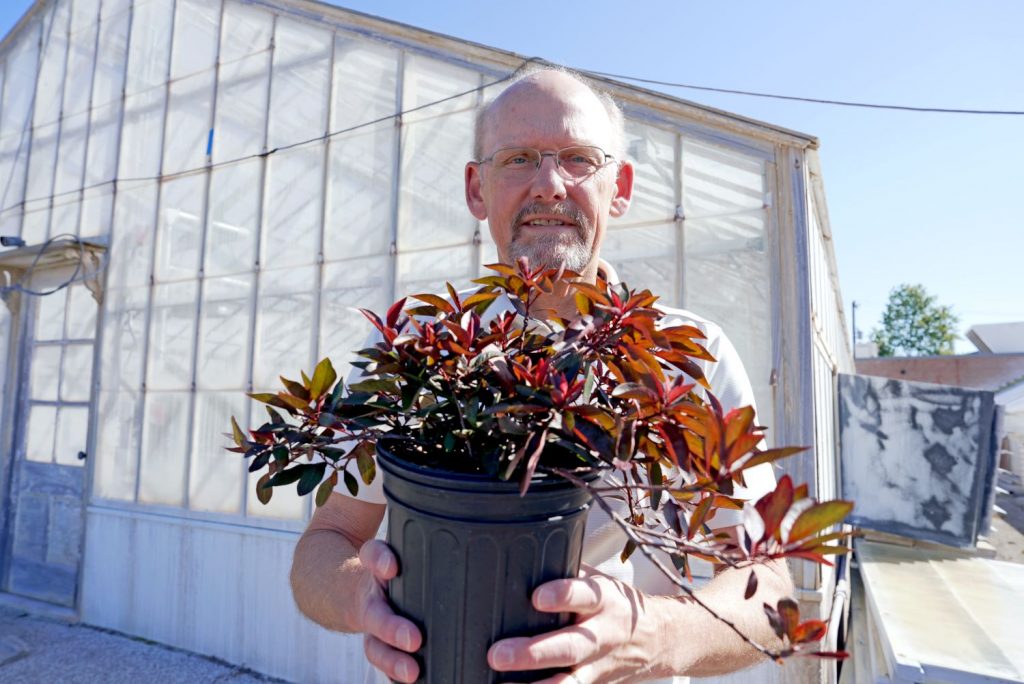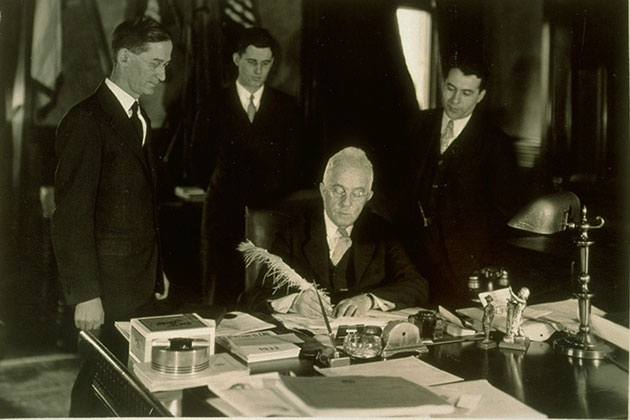Mark Brand, professor of horticulture and plant breeding in the College of Agriculture, Health and Natural Resources, developed a novel method for propagating female-only northern bayberry plants and a new cultivar of the popular purple sand cherry.
A ‘Brand’ New Way of Making Bayberries
Brand and his former student Jackie Edgett developed a novel method that can be used to propagate only female versions of the northern bayberry using tissue culture. They published their findings in HortScience.
Northern bayberry is a popular landscaping plant in the Northeast. It is native to the area and can withstand harsh conditions thanks to a few unique adaptations.
“The fact that it’s a native plant makes it desirable,” Brand says. “There’s a big interest in native plants right now.”
Northern bayberry can “fix” its own nitrogen, allowing it to grow in normally unfertile soil, thanks to a symbiotic relationship with a bacterium that makes atmospheric nitrogen available to the plant through the soil.
Northern bayberry can also spread and regenerate using an underground network of stems known as rhizomes.
“It works well in places like parking lot islands,” Brand says. “Places where they throw 10 to 12 feet of snow on in the winter, trucks drive over them, but the plants have the ability to regenerate and can deal with that kind of condition.”
But one of the most attractive features of the plant is that the females produce fruits that attract wildlife like birds and have a pleasant aroma. In fact, in Colonial New England people used the wax on bayberries to make candles.
The female plants are also more compact than male plants, making them more attractive for landscaping.
But it is hard to propagate just female plants using traditional methods like cuttings. This means commercial growers must grow mixed male and female plants from seed, even though the females are much more popular.
Brand’s new in-vitro method introduces a female plant into a tissue culture and stimulates it to produce shoots that are much easier to root coming from the tissue culture environment.
“They’re not nearly as difficult as a standard stem cutting you take from an outdoor-grown plant,” Brand says.
Current graduate student Tori Burton has been exploring ways to boost propagation output by harvesting and rooting the miniature shoots that grow out from the original rooted tissue-cultured plantlets. These microcuttings root easily and can be collected repeatedly over a period of weeks in a process called retipping. Coupling tissue culture with retipping allows for a boost of four to five times in production for growers.
Brand used the popular “Bobbee” cultivar when developing the method.
“People know this plant. They are looking for the plant, so the nurseries can use the tissue culture method to produce that name-recognized variety that everybody’s looking for,” Brand says.
Brand is working with Prides Corner Farm in Lebanon, Connecticut, which has its own tissue culture lab, to implement the method.
Brand says he expects Prides Corner will be able to provide these female-only Northern Bayberry plants to customers within two years.
Keeping the Sand Cherry Classy
Brand has developed and trademarked a new cultivar of purple leaf sand cherry, produced by crossing the purple leaf plum tree, which is from Asia, and the sand cherry shrub, a native to the Northeast.

The original purple leaf sand cherry has been popular for years. But it has one glaring issue – it gets too big.
It grows to 10 or more feet tall. It also gets “naked” as it grows, meaning there is not much foliage at the bottom of the plant.
“There are a lot of positives about that plant, but being too big is a negative,” Brand says.
Brand decided to remake this cross. But he used a form of the sand cherry that commonly grows as ground cover in Connecticut and Massachusetts riverbeds, rather than the 3-foot-tall variety used for the original.
“We were able to generate a much more diminutive, small-size version of the purple leaf sand cherry,” Brand says. “Ultimately, it should be a lot more appropriate for most residential landscapes and it won’t grow up in front of the bay window and block the view.”
The “Stay Classy” cultivar grows quickly when they are young, which will allow commercial growers to get them to customers fast, but they won’t get much larger after this initial stage.
“It gets to full size and then slows down for the consumer,” Brand says.
When fully grown, the “Stay Classy Purple Leaf Sand Cherry” is only about 2 feet tall and 2 to 3 feet wide.
The plant is being marketed to wholesale producers across the U.S. by Proven Winners this growing season. Once wholesalers buy the cultivar, they will grow it for a year or two before making it available to customers.
Brand expects the plants will be sold in the northern United States and Canada.
This work relates to CAHNR’s Strategic Vision area focused on Ensuring a Vibrant and Sustainable Agricultural Industry and Fostering Sustainable Landscapes.
Follow UConn CAHNR on social media.

